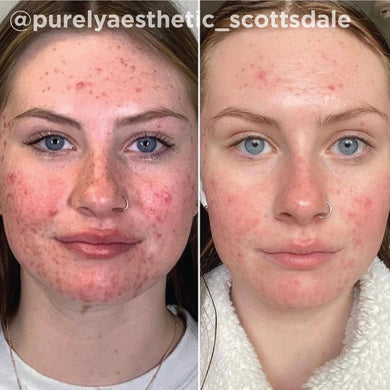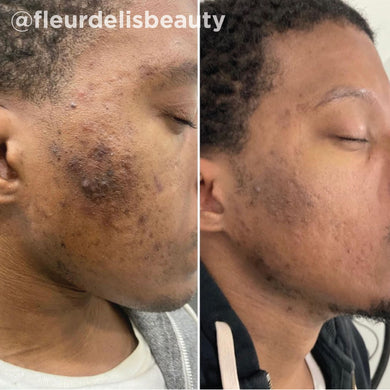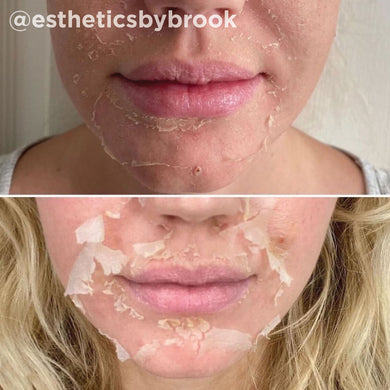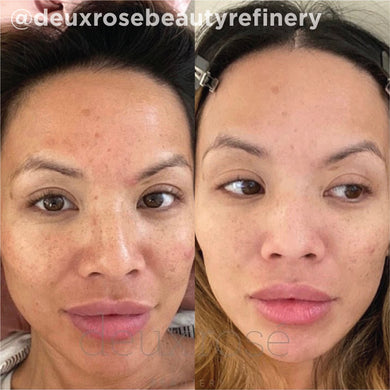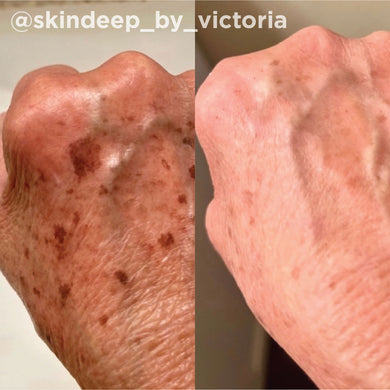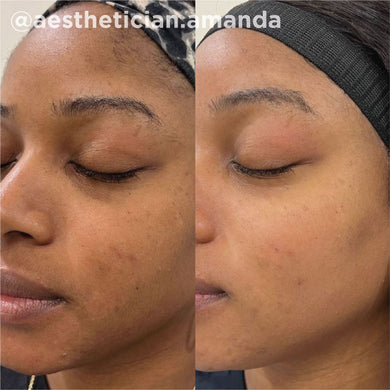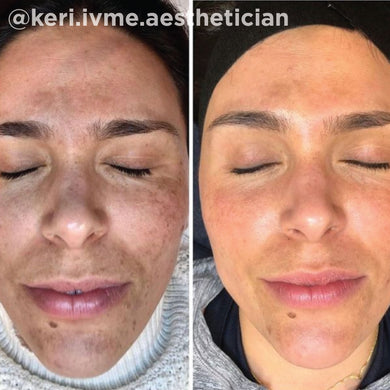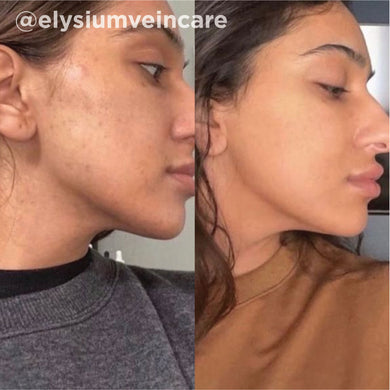VI Peel Body
Written by Jeanine B. Downie, MD, FAAD as part of The Brown Skin Agenda Initiative.
Everyone knows you need a daily facial skincare routine, periodic deeper dive maintenance, and in many cases, scheduled professional treatments to counteract the effects of living, aging, and the environment.
But when it comes to caring for skin on the body, we’re not always dialed in. There’s definitely a great divide between how we care for our facial complexions versus our body skin. Many of my patients tell me that with a limited self-care budget, they would rather spend money on their facial products and treatments. After all, body skin is typically less noticeable, often covered by clothing, and more durable, as it’s thicker in nature than certain areas of facial skin.
But that doesn’t mean it’s invincible. Pigmentation issues, sun damage, acne, keratosis pilaris (KP), and wrinkly or crepey skin can appear on our arms, legs, knees, and chest. And, just like our faces, any damage done in the past can take years to surface—regardless of your skin color or skin type. So what can you do to make sure you’re giving body skin as much attention as your face?
Here’s the advice I give my patients of all skin tones, to ensure their body skin is as healthy and aesthetically fit as the skin on their faces. This routine is suitable for all year-round and even safe to start in summer—a great time to start showing off more, healthier-looking skin!
Everyday care
- Step 1: Cleanse with a gentle body wash. You can choose a simple, moisturizing body cleanser that’s loaded with emollients to prevent dryness. If you prefer a bar soap, opt for one that’s rich in glycerin, emollients, and hydrators.
- Step 2: After bathing, moisturize while your skin is still damp. Use a lotion with skin-nurturing ingredients like hyaluronic acid and ceramides.
- Need extra nourishment? Follow with a body oil that seals in the benefits of your moisturizer.
- Have KP, folliculitis, rough texture, and/or acne scars? Seek out a body moisturizer with no more than 10% glycolic acid for daily exfoliation.
Step 3: Protect with SPF—everywhere. Think like a dermatologist: aim for daily application of sunscreen from forehead to toes. Ideally, apply and reapply SPF 30+, even if it’s cloudy and/or your makeup says it includes sunscreen.
And, a note to those with skin of color: you may be surprised to learn that not even melanin-rich complexions are immune to UV damage, ranging from discoloration to skin cancer.
Cumulative, day-to-day exposure (think as little as 5 to 15 minutes a day) adds up and develops into wrinkles, dark spots, crepey skin, and worst of all, skin cancer on ALL skin tones. Fortunately, dermatologists are sounding the alarm to their patients with skin of color: your skin is just as vulnerable to the elements as lighter skin tones.
Thankfully, scientific researchers are now actively incorporating melanin-rich skin types into skin cancer risk and prevention studies, providing a more accurate depiction of how skin cancer and UV damage impacts skin of color. (Learn more about SPF, skin cancer, and skin of color here).
A few times a week
- Moisturize deeply to keep skin even and smooth to the touch. If you have KP, folliculitis, rough texture, and/or acne scars, you’ll benefit most from a body lotion with chemical exfoliants, like glycolic or salicylic acid. Body lotion stays on your skin, allowing actives to penetrate and do their job. For best results, combine with a body wash that also contains chemical exfoliants like glycolic or salicylic acid. Make sure to keep the lather on your body for a few minutes before washing off. Steer clear of physical scrubs with beads or other skin agitators that can break open skin lesions and may trigger permanent scarring.
-
Sweating during summer months means more bacteria build-up that triggers body odor. Address this issue with a salicylic acid cleanser; avoid applying to open wounds and too close to the genitals. Rinse off completely.
- When shaving, take your time and always use a gel, cream, or foam. Go with the direction of hair growth to prevent bumps, ingrown hairs, redness, and irritation. One tip I give to my patients is that shaving after exfoliating helps slough off dead skin cells so your razor can get closer to the follicle.
Every 3 months
-
Get a body peel treatment. Believe it or not, peels are safe and may deliver even better results when used in the summer. My personal go-to is the VI Peel Body treatment, and I recommend it all year round for patients seeking optimal results. It’s a painless, non-invasive, professional chemical peel formula developed exclusively for the unique needs of skin on the body (the skin on your body is much thicker than the skin on your face), AND it’s safe for all skin tones.
The VI Body Peel Treatment contains essential renewing, resurfacing, and exfoliating ingredients like alpha hydroxy acids and trichloroacetic acid (TCA) to specifically reduce acne, hyperpigmentation, and sun damage, while also reducing the look of KP, stretch marks and surgical scars. See below for some amazing before and after results.



- For added intensity and greater potential results, ask your dermatologist about adding professional-use-only devices like IntraGen, Zaffiro, or IntraCel to your VI Peel Body treatments.
Making the most of summer: Lifestyle tips and beauty tricks
-
At-home skin maintenance varies from patient to patient, but I universally recommend a minimum SPF 30 sunscreen, applied at least four times a day in the summer, and 6-8 times when sweating more and/or spending the day outdoors. That is the single most important home/work/play preventative measure for the face and the body.
- When you can, wear a hat, seek the shade, and invest in some UPF clothing.
- Shower and change your clothing after exercise or outdoor activities to prevent bacteria build-up that can lead to body skin breakouts.
-
For exfoliation (especially as maintenance after your VI Peel Body treatment), try at-home peel pads.
-
Don’t forget gel masks—they hold and deliver the copious amounts of moisture your skin needs after exposure to the elements.
- Be mindful—avoid picking your breakouts and scratching your mosquito bites! This can lead to long-term scarring and pigmentation.
Trust the process for beautiful skin from head to toe
You know your skin better than anyone else, so make sure you’re treating your body as well as you treat your face. Be on the lookout for opportunities to spread the love—like extra-rich moisturizing lotion or a little more exfoliation. Day to day, week to week, season to season, stick to your regimen, and invest in professional treatments like VI Peel Body to make sure you’re always looking your personal best.
Interested in learning what a VI Peel Body treatment can do for you? Find your nearest skincare provider here.
About Jeanine B. Downie, MD, FAAD
Dr. Downie is board certified by the American Board of Dermatology and holds medical licenses in the states of New Jersey, New York, and California. In addition, Dr. Downie is the director of her own practice, Image Dermatology P.C. in Montclair, N.J. She has extensive training and experience in all aspects of dermatology, cosmetic dermatology, laser, and dermatologic surgery. Dr. Downie provides both adult and pediatric patients with competent, compassionate care, and all patients are treated utilizing the most medically advanced techniques.
Dr. Downie has published over 100 papers in scientific peer-reviewed journals and is a frequent contributor to The Today Show, The CBS Morning Show, WPIX, Good Morning America, News 12, and The Kelly and Mark Show on ABC TV. She is a philanthropist and is very involved with the United Negro College Fund, National Public Radio, The Southern Poverty Law Center, Dress for Success, The Junior League, Public Broadcasting Services, March of Dimes, All-Stars, Cares Mentoring, The National Urban League, Foundation for Ethnic Understanding, Planned Parenthood, CASA (Court Appointed Special Advocates) and several other national and local charities.
